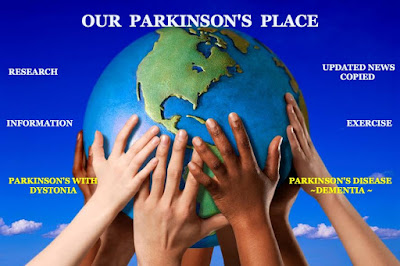Speech and Swallowing Therapy
Speech and Communication Problems in Parkinson’s disease
Although difficulty with speech is not always associated with Parkinson’s disease, for some individuals, it is a significant problem. In fact, a change in speech may be one of the first symptoms.
The speech disorder is often characterized by
- soft voice
- less precise articulation
- problem with 'fluency' or stuttering, especially at the beginning of a sentence when it may be difficult to start speaking quickly
Alternatively, individuals may complain of rapid bursts of speech. There may also be a loss of inflection leading to a monotonous sounding voice and there may be a reduction in facial expression.
These symptoms may impair communication both at work and at home. Dysarthria is the name for the speech disturbance experienced by persons with Parkinson's disease. For some people, medications used for the treatment improve speech. While in others, speech may be worse on medication.
Not all people with Parkinson's disease are aware that their voice is softer or that they are not speaking distinctly. If listeners are asking the person with Parkinson's disease to repeat himself or otherwise act as if they did not hear or understand what was said, this is a strong sign that dysarthria is present. If there is a noticeable change in the speech, the individual with Parkinson's disease should consult with his/her doctor.
Treatment of speech problems
Over the years, a number of speech therapy programs have been developed to improve speech and communication. Unfortunately, not much is known regarding benefits of these treatments. The goal of this therapy is to increase loudness, improve clarity of speech and increase melody or inflection over the sentence. General suggestions that help some people include the following:
- Face your listener when speaking
- Express yourself in short, concise sentences
- Take a breath before speaking and pause between phrases to take another breath
- Exaggerate pronunciation, particularly of consonants
- Pretend the listener is hard of hearing
- Practice reading out loud using these techniques
Although most people with Parkinson's disease will continue to eat normally throughout the course of the disease, some will develop difficulty swallowing. Early symptoms of difficulty swallowing (or dysphagia) are of food sticking in the throat or of liquids going the wrong way. For some, chewing may become more difficult, or an individual may have difficulty getting the swallow “started.” Later on, the swallowing problem may become so severe that a diet change may be required.
Some suggestions that have helped people with Parkinson’s disease to eat include:
- If taking medications for Parkinson’s disease, eat meals after the medication has taken effect, usually 1 hour after taking the medication(s)
- Ensure adequate time to eat
- Eat food that has been cut in small pieces—don’t hesitate to ask a companion to cut up meat or foods
- Try using “easy grip utensils.”
Excess saliva is another common problem in Parkinson's disease. In most cases, the problem is not one of having too much saliva, which is commonly assumed, but rather a case of not swallowing often enough. If the automatic reflex that causes us to swallow our saliva once every minute or two is not operational, saliva builds up in the mouth until it leaks out and the person notices that he or she is drooling. This can be very embarrassing, of course. Sometimes, once the problem is brought to the attention of the individual with Parkinson's, it can be alleviated by developing a habit of consciously swallowing every few minutes. Swallowing can be further stimulated by carrying a bottle of water and taking a sip every few minutes. If that does not help, a speech-language pathologist may recommend a more structured therapy program.
Treament of swallowing problems
Swallowingproblems should be reported to your doctor. In some circumstances referral to a speech pathologist may be recommended. Often the speech pathologist can provide strategies to facilitate swallowing and avoid choking. In some instances, the specialist may use procedures to visualize a person’s swallowing technique such as fluoroscopy (using x-rays) or endoscopy (using a tiny video camera). Exercises to strengthen the muscles used in swallowing are sometimes helpful.
http://pdcenter.neurology.ucsf.edu/patients-guide/speech-and-swallowing-therapy
Videos:
By Marilyn Tait
In this weeks edition of Parkinson Power we learn how this disease can alter your vocal and swallowing muscles. Marilyn talks to us about how vital it is that upon first diagnoses you immediately began voice therapy to keep your voice and swallowing as strong as possible.
~~~~~~~~~~~~~~~~~~~~~~~~~~~~~~~~~~~~~~~~~~~~~~~~~~~~~~
PD Voice Exercise: Who's Makin' Noise?
Soft voice or trouble swallowing part of your Parkinson's symptoms? Here's fifteen
minutes of voice and throat workout, based on work with my Dad's OT and many
PD sites. If your PD partner keeps telling you to "speak up" this may be the post
for you...swallowing can be an issue if the tongue slows in the mouth causing
positional problems preparing the food to swallow. The throat also can "forget"
it's cues and cause gagging...let's work on this!
~~~~~~~~~~~~~~~~~~~~~~~~~~~~~~~~~~~~



No comments:
Post a Comment